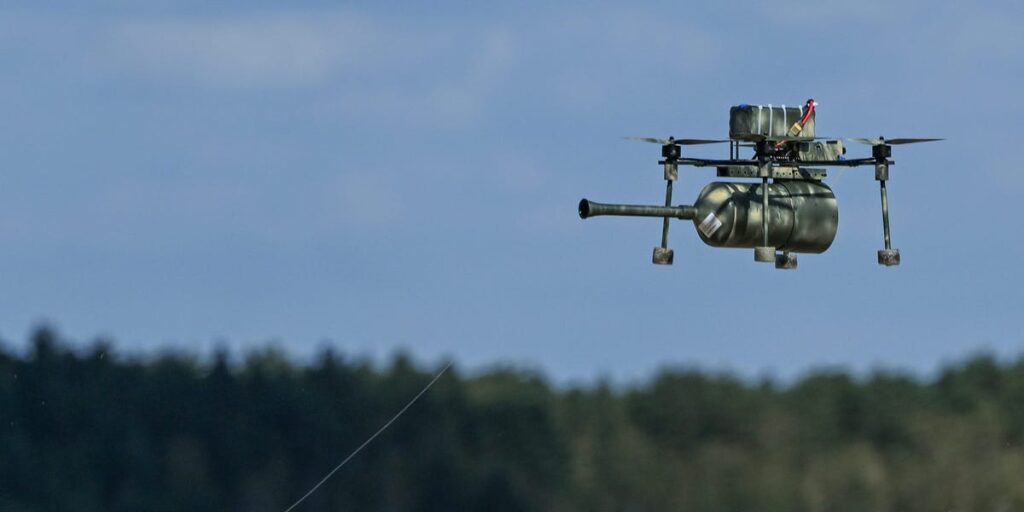Ukrainian first-person-view drones that use fiber optic cables to circumvent jamming have been found at sea, according to Russian reports of an attack in the Krasnodar region.
The drones were seen in images and a video published this weekend by Russian news channels and military bloggers, which said the uncrewed platforms were obtained after Kyiv attacked the port cities of Tuapse and Novorossiysk on Friday.
Krasnodar officials said Ukrainian naval drones were involved in the raid, which Ukraine said targeted oil infrastructure on the Black Sea coast. At least two people from a major oil firm’s office were reported injured.
A video of the aftermath appears to show a disabled uncrewed surface vehicle — essentially a sea drone — moored near the shore. It’s unclear what happened to the drone, but several boxes with hinged lids can be seen attached to its hull.
Ukraine has used remotely operated roofs or lids to unleash drones before, particularly when it deployed dozens of FPV platforms from trucks deep inside Russia during June’s Operation Spiderweb.
A separate photo of one box’s interior shows a first-person-view, or FPV, quadcopter drone within. Other images showed quadcopters with attached canisters designed to hold fiber optic spools.
Business Insider could not independently verify the authenticity of the footage, though the platforms they depict align with designs for Ukraine’s sea drones and fiber-optic drones.
The footage represents the first publicly known instance in which Ukraine has deployed fiber-optic drones at sea, in a continued sign of how the drone war is evolving low-cost tactics for both ground and naval combat.
Motherships of fiber-optic drones
The concept of deploying quadcopters by sea isn’t new. Kyiv’s forces were previously reported to have used naval drones as carriers for standard FPV drones as early as December.
Fiber-optic drones, however, are a special type of uncrewed platform mounted with a spool of extremely fine cables that can stretch for miles. The cables allow the drone to stay connected with a pilot or signal source despite the presence of electronic warfare, which jams radio frequencies that FPV drones typically rely on.
While more difficult to manufacture and deploy, fiber-optic drones grew popular after late 2024, as both Ukraine and Russia sought ways to bypass jamming devices that had flooded the battlefield.
Both sides have been experimenting with mobile carriers or “motherships” for fiber-optic drones because the cables can inhibit the platform’s range or capabilities. The further a drone is designed to fly, the longer its cable must be, adding to its weight. The extra load might cause the platform to fly slower, require a larger frame, or carry a smaller explosive payload.
Ukrainian and Russian engineers have thus tried alleviating those problems by inventing uncrewed ground vehicles that can be controlled via radio signal to approach a jammed area and then release fiber-optic drones.
Since fiber-optic drones are rarer, drone pilots generally reserve them for high-value targets or to attack jammers to free up airspace for standard FPV drones to follow up.
The Russian reports also coincide with Ukraine continuing to develop new sea-based drones instead of a conventional fleet. Kyiv has, over the last three years, heavily deployed uncrewed surface vessels designed to ram into enemy warships with explosives attached to their hulls.
The tactic is gaining traction elsewhere in the world, with NATO, the US, and Taiwan among the parties developing and testing their own small, cheap sea drones.
Russia has also been bringing fiber-optic drones to its naval operations. Earlier this month, Russian state media reported that the Black Sea Fleet was testing naval drones guided by heavy fiber-optic cables designed to sink as their reel unwinds.
Read the full article here
















